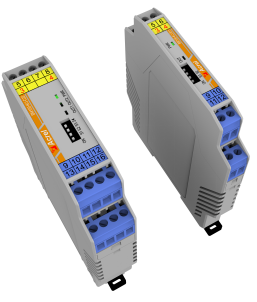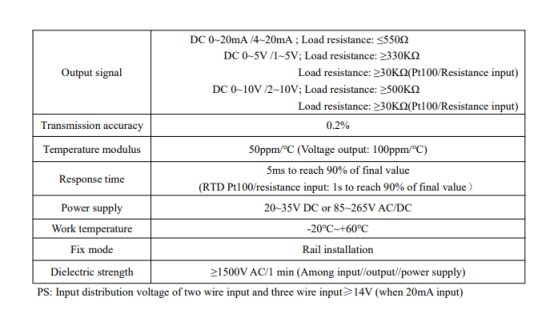Abstract:It involves a large number of motor-related mechanical movements in the industry. By detecting the status of these mechanical movements, problems can be discovered in time to avoid accidents. For mechanical position detection, proximity switches are usually used. The signal output by the proximity switch is a wet contact signal and has a certain switching frequency. Usually, the proximity switch is directly connected to the controller, but in industrial scenarios such as cement plants, steel plants, and chemical plants, the large number of equipment makes the electromagnetic environment complex, and the signal is easily interfered with, affecting the monitoring quality. Installing a signal isolator between the proximity switch and the controller can effectively filter out most interference signals and ensure the stability of the entire system.
Keywords: signal isolator; proximity switch; motor; signal interference
0: Overview
Proximity switches are divided into capacitive proximity switches and inductive proximity switches. The main working principle of the inductive proximity switch is to generate a high-frequency variable magnetic field internally, and the magnetic field is released through the sensing surface. When a metal object approaches the sensing surface, an eddy current is generated. When the signal is detected, the proximity switch converts it into a switch signal output. The controller can convert the speed of the corresponding object through the periodic switch signal output by the proximity switch. According to the above functions and applications, in the production process of cement plants, proximity switches are installed in the belt and the tail wheel of the elevator to monitor the corresponding speed to avoid slipping. Installing the proximity switch in the rotary feeder and detecting the speed can prevent the mechanical structure from getting stuck and causing the motor to burn out. It can be seen that speed monitoring plays a more important role in these scenarios. In many industrial scenarios, such as cement plants, steel plants, chemical plants, etc. The on-site environment is complex and there are many interference sources, which affect the quality of signal transmission and even cause damage to related equipment. The use of signal isolators can effectively avoid the above risks and ensure the stable operation of the system.
1: NAMUR type proximity switch
The NAMUR proximity switch is a common passive two-wire sensor that requires an external voltage of 8V DC to work properly. If the loop current is ≤1.2mA, the switch is considered to be open, and if the current is ≥2.1mA, the switch is considered to be closed. Due to the characteristics of the NAMUR proximity switch, it is not convenient to connect it directly to the controller. A signal isolator needs to be installed between it and the controller. The signal isolator can convert the NAMUR signal into a relay or transistor signal to the controller to complete the signal connection. The maximum switching frequency of the NAMUR proximity switch can usually reach 2000Hz, which can be used for speed monitoring in some scenarios. The switching frequency of mechanical relays is far from meeting the above requirements and meeting related applications, so it is necessary to select a signal isolator with transistor output, and the switching frequency of the transistor can meet the corresponding requirements.

Schematic diagram of speed measurement using proximity switch
A metal object is placed on the wheel, which can be sensed by the NAMUR proximity switch. The proximity switch completes a switching cycle, which is equivalent to the wheel rotating for a cycle. The speed of the wheel can be calculated through this cycle. The faster the wheel speed, the higher the switching frequency of the proximity switch, and a signal isolator that matches its frequency is required. High-frequency signals are interfered with, and it is not possible to simply add a filter circuit to the port, because the filter circuit may filter out the normal switching frequency signal as an interference signal. How to ensure that the above signals can be transmitted accurately is an important concern.
2: Common solutions
Electromagnetic interference signals are coupled to normal signals through the sensor's external signal lines, causing the back-end controller to receive abnormal signals, resulting in controller data collection errors and even the risk of damaging the equipment. Installing a signal isolator between the sensor and the controller can effectively solve the above problems.
The switch input signal isolator transmits the output signal of the sensor to the controller through optical coupling isolation. Electrical isolation is formed between the sensor and the controller, forming two independent circuits. If an abnormally dangerous high-energy signal appears, it cannot directly reach the controller through the cable, protecting the controller from the influence of dangerous signals. At the same time, the ground loop is cut off to prevent the ground loop from picking up various interference signals in the environment and affecting the transmission quality of the signal.
3: BM100 switch input signal isolator
3.1 Overview
BM100 switch input signal transistor output signal isolator. Receive dry contact or NAMUR type proximity switch signals, the receiving signal frequency is ≤5KHz, and can receive high-frequency signals. Output transistor (wet contact signal). The transistor is externally connected to a resistive load, and the driving current is up to 40mA. It is not recommended to power the drive device. There is a dip switch on the top of the product, which can make the input and output have the same logic or reverse logic according to requirements. It also has a fault detection function to detect whether there is a short circuit or open circuit in the input circuit. (NAMUR type proximity switch signals can be used directly, and dry contact signals need to be connected to an external resistor at the input end)

BM100 analog signal isolator wiring

BM100 series analog isolator appearance
3.2 Technical parameters

4:Conclusion
The switch input transistor output signal isolator is usually used in scenarios with high switching frequency requirements and low load requirements. It can effectively filter most interference signals and protect related equipment from damage by dangerous high-energy signals. The input supports dry contact or NAMUR type proximity switch signals. The top has a dip switch to support manual adjustment of the input and output in the same or reverse direction and whether the input circuit is short-circuited or open-circuited. Customers can select and configure according to their actual use to protect the normal and stable operation of related systems.